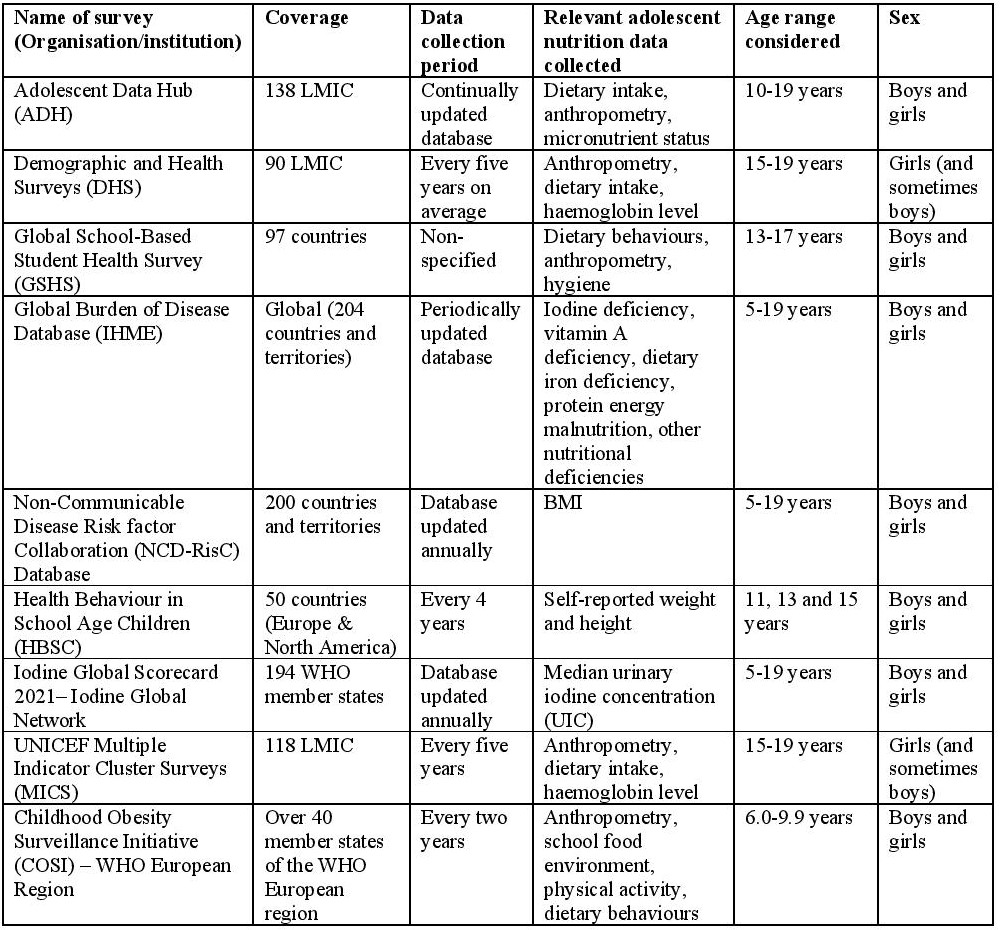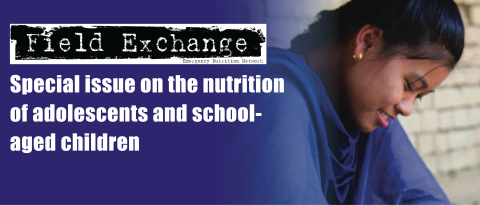Capturing nutrition data for school-age children and adolescents
By Zakari Ali and Natasha Lelijveld
Zakari Ali is Higher Scientific Officer at the MRC Unit, The Gambia Unit at the London School of Hygiene and Tropical Medicine (LSHTM). He works on food systems adaptation in West Africa and has a keen interest in school-age children and adolescent nutrition.
Natasha Lelijveld is a Senior Nutritionist at ENN specialising in infant and child wasting and adolescent nutrition. She has previously worked in research at the Malawi-Liverpool Wellcome Trust, the Hospital for Sick Kids in Toronto, the LSHTM and the No Wasted Lives initiative at Action Against Hunger.
“Without good data, we’re flying blind. If you can’t see it, you can’t solve it.”
Kofi Annan (Former United Nations Secretary-General, 1997-2006).
Data gaps in school-age children (SAC) and adolescent nutrition and health are a key constraint to advancing advocacy and tracking progress globally. The exclusion of SAC and adolescents, or having them included in wide age ranges together with adults in routine surveys, represents a significant missed opportunity in obtaining SAC and adolescent-specific data (Ali et al, 2020).
However, there are recent and ongoing efforts to generate SAC and adolescent-specific age and sex-disaggregated data. Here, we summarise some of the major surveys, studies and databases that routinely collect or host data at national or regional levels on SAC and adolescent nutrition globally (Table 1). Below, we briefly discuss two data platforms and two surveys that host and collect data on SAC and adolescents.
The Adolescent Data Hub (ADH): The ADH is one of the largest open-access data catalogues that aims to increase the accessibility of data on adolescents in low- and middle-income countries (LMIC). Users can search for datasets by country or region, sex, age (10-14 and 15-19 years of age), the type of data (longitudinal or cross-sectional) or by topic (White et al, 2020).
Global Burden of Diseases (GBD) database: The GBD database is hosted by the Institute for Health Metrics and Evaluation (IHME). It provides annually updated robust modelled data estimates for 333 health outcomes and 84 risks and determinants. The IHME’s GBD data was used for 12 headline indicators for adolescent health as defined by the Lancet 2016 commission on adolescent health and wellbeing (Azzopardi et al, 2019).
The Demographic and Health Survey (DHS) programme: During the last three decades, the DHS programme has supported the collection of 400 nationally representative surveys in over 90 LMIC. While adolescents are not a specific target group of the DHS, adolescents are included in the 15-24 years of age category. Benedict et al (2018) pulled microdata (from 2000-2017) from 87 countries to summarise the nutrition of adolescent girls and boys 15-19 years of age. They estimated the prevalence of anaemia, iron supplementation and dietary diversity. Anthropometric data was reanalysed using World Health Organization (WHO) cut-offs as the DHS programme commonly uses adult body mass index (BMI) cut-offs for adolescents1.
Global School-Based Student Health Survey (GSHS): The GSHS is a WHO initiative with the Centers for Disease Control and Prevention. GSHS is designed to assess the health and nutrition behaviours of school-going adolescents (13-17 years of age). The self-administered survey reports data on adolescent overweight and obesity using BMI-for-age cut-offs. Intake of carbonated soft drinks, food security and other indicators are also collected depending on the implementing country’s priorities and preferences.
These adolescent-specific data sources, in addition to the others outlined in Table 1, endeavour to make data available and in more user-friendly formats although they are only as good as the original surveys. Hence, data gaps in survey designs, such as the regular omission of SAC and adolescents, non-data disaggregation (by sex and age group) or including them in adult age groups, limit the utility of the data and estimates from most sources.
Table 1: Surveys and databases reporting school-age children and/or adolescent nutrition data

Low- and middle-income countries (LMIC); body mass index (BMI); World Health Organization (WHO)
For further information, please contact Zakari Ali at Zakari.Ali1@alumni.lshtm.ac.uk
1See research summary in this edition of Field Exchange entitled “Anthropometric assessment of nutritional status in school-age children and adolescents ”
References
Ali, Z, Lelijveld, N, Wrottesley, S and Mates, E (2020) Adolescent nutrition mapping study: A global stakeholder survey of policies, research, interventions and data gaps. Emergency Nutrition Network. Available: https://www.ennonline.net/adolescentnutritionmappingstudy (Accessed: 26th of July 2021).
Azzopardi, PS, Hearps, SJC, Francis, KL et al (2019) Progress in adolescent health and wellbeing: tracking 12 headline indicators for 195 countries and territories, 1990–2016. The Lancet. 2019;393(10176):1101-1118.
Benedict, R, Schmale, A and Namaste, S (2018) Adolescent Nutrition 2000–2017: DHS Data on Adolescents Age 15–19. Rockville, MD: ICF. Available: https://dhsprogram.com/pubs/pdf/CR47/CR47.pdf (Accessed: 26th of July 2021).
White, C, Misunas, C, Chuang, E, De Almada, M, Psaki, S, Ngo TD (2020) The Adolescent Data Hub: The Largest Catalog of Open Access Data on Adolescents Living in Low- and Middle-Income Countries. Studies in family planning. 2020;51(1):103-115.


